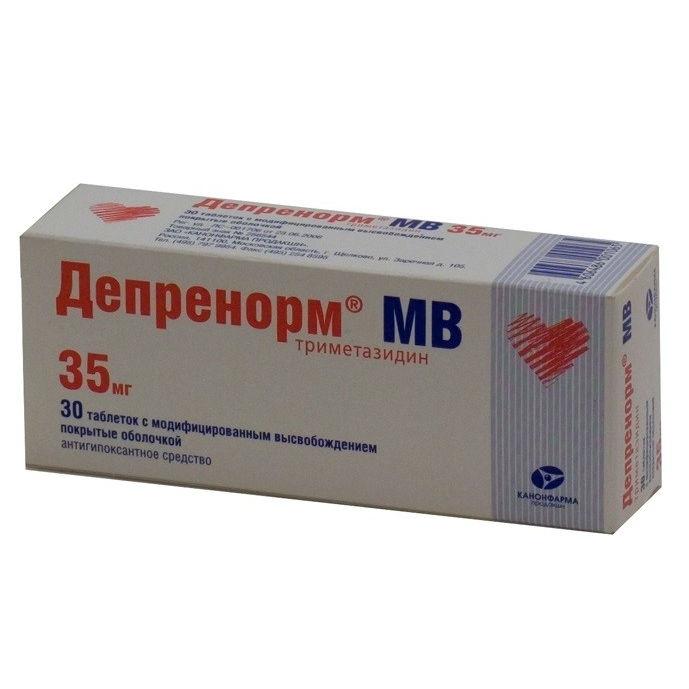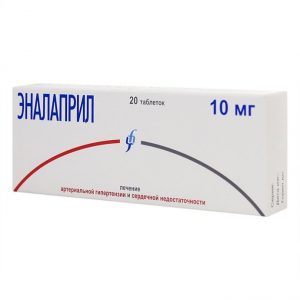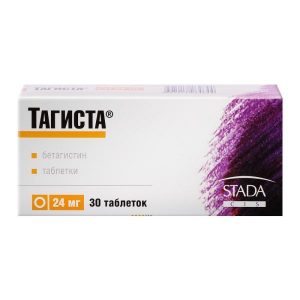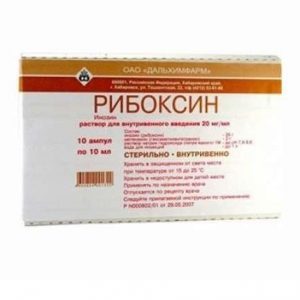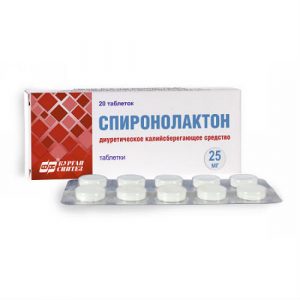Description
Latin name
Deprenorm MV.
release form
prolonged-release tablet, film-coated.
Packing
In a blister pack of 15 tablets.
In a cardboard box 2 blisters.
Pharmacological action
Pharmacodynamics
Has antihypoxic effect. Trimetazidine prevents a decrease in the intracellular concentration of adenosine triphosphate (ATP) by maintaining the energy metabolism of cells in a state of hypoxia. Thus, the drug ensures the normal functioning of membrane ion channels, transmembrane transfer of potassium and sodium ions and preservation of cellular homeostasis. Trimetazidine inhibits fatty acid oxidation by selectively inhibiting the enzyme 3-ketoacyl-CoA-thiolase (3-CAT) of the mitochondrial long chain fatty acid isoform, which leads to increased glucose oxidation and accelerated glycolysis with glucose oxidation, which determines the protection of the myocardium from ischemia. Switching energy metabolism from fatty acid oxidation to glucose oxidation underlies the pharmacological properties of trimetazidine.
It has been experimentally confirmed that trimetazidine has the following properties:
supports energy metabolism of the heart and neurosensory tissues during ischemia reduces the size of myocardial damage
does not have a direct effect on hemodynamic parameters.
In patients with angina pectoris, trimetazidine:
increases coronary reserve, thereby slowing the onset of exercise-induced ischemia, starting from the 15th day of therapy,
limits the fluctuations in blood pressure caused by exercise, without significant changes in heart rate
reduces the frequency of angina attacks and the need for short-acting nitroglycerin
improves left ventricular contractility in patients with ischemic dysfunction.
Pharmacokinetics
After oral administration, trimetazidine is absorbed from the gastrointestinal tract and reaches its maximum plasma concentration after about 5 hours. Over 24 hours, the plasma concentration remains at a level exceeding 75% of the concentration determined after 11 hours. The equilibrium state is reached after 60 hours. Eating does not affect the bioavailability of trimetazidine.
Distribution volume is 4.8 l / kg, which indicates a good distribution of trimetazidine in the tissues (the degree of binding to blood plasma proteins is quite low, about 16% in vitro). Trimetazidine is excreted mainly by the kidneys, mainly in unchanged form. Renal clearance of trimetazidine directly correlates with creatinine clearance (CC), hepatic clearance decreases with the age of the patient.
Indications
Coronary heart disease: prevention of attacks of stable angina (as part of combination therapy).
Pregnancy and lactation
There are no data on the use of Deprenorm ® MV in pregnant women. Animal studies have not revealed the presence of direct or indirect reproductive toxicity. Reproductive toxicity studies have not shown the effect of trimetazidine on reproductive function in rats of either sex. The drug is contraindicated during pregnancy due to the lack of clinical data on the safety of its use.
There is no data on the release of trimetazidine or its metabolites into breast milk. The risk to the newborn / child cannot be excluded. Do not use Deprenorm ® MV while breastfeeding.
Composition
1 sustained-release film-coated tablet contains:
Active ingredient:
Trimetazidine dihydrochloride 35 mg.
Excipients:
Calcium hydrogen phosphate dihydrate
Microcrystalline cellulose
Silicon dioxide colloidal (aerosil)
Hydroxypropyl cellulose Klucel LF
Hydroxypropyl methyl cellulose, plsdlt-6.
Film composition:
Selekout (hydroxypropylmethyl cellulose, plasdon S-630, polyethylene glycol, talc, iron oxide red, titanium dioxide).
Dosage and Administration
Inside, with meals.
Deprenorm ® MB take 1 tablet of 70 mg once a day (in the morning).
The course of treatment – on the recommendation of a doctor.
Side effects
Frequency of side effects, marked when taking trimetazidine is given in the following gradation: very often (> 1/10) often (> 1/100, <1/10) infrequently (> 1/1000, <1/100) rarely (> 1/10 000, <1/1000) very rarely (<1/10 000, including individual messages) of an unspecified frequency (the frequency cannot be calculated from the available data). From the central nervous system: often – dizziness, headache. Unspecified frequency – symptoms of parkinsonism (tremor, akinesia, increased tone), instability in the Romberg position and the “unsteadiness” of the gait, the syndrome of “restless” legs, other associated motor disorders, usually reversible after discontinuation of therapy. Sleep disorders (insomnia, drowsiness). From the cardiovascular system: rarely – orthostatic hypotension, flushing of blood to the skin of the face, palpitations, extrasystole, tachycardia, marked decrease in blood pressure. From the circulatory and lymphatic systems: unspecified frequency – agranulocytosis, thrombocytopenia, thrombocytopenic purpura. From the digestive system: often – abdominal pain, diarrhea, dyspepsia, nausea, vomiting. Unspecified frequency – constipation. From the liver and biliary tract: unspecified frequency – hepatitis. From the skin: often – skin rash, itching, urticaria. Unspecified frequency – acute generalized exanthematous pustulosis, Quincke’s edema. General disorders: often – asthenia. No drug interaction There are no data on interaction with other drugs. Overdose There is only limited information on the overdose of trimethazidine. In case of overdose, symptomatic therapy should be performed. Storage conditions Store in a dry, dark place at a temperature not exceeding 25 ° C. Keep out of the reach of children. Expiration 2 years. Active ingredient Trimo tosadine Conditions of supply of Pharmacy Prescription Dosage form Dosage form tablets prolong. Kanonfarma, Russia
